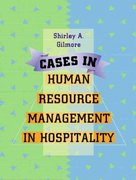Question
COVID-19 likely to cause rise in UK food prices As supply chain disruptions and labour shortages across the UK continue, retailers believe that food prices
COVID-19 likely to cause rise in UK food prices As supply chain disruptions and labour shortages across the UK continue, retailers believe that food prices are likely to begin to rise. Food inflation eased to 1.1% in March, a drop from 1.6% in February. These figures, put together by the British Retail Consortium, are below the 12 and 6 month averages of 1.6% and 1.4%. "The recent upwards pressure on food prices slowed a little in March, with a slowdown in the rate of inflation in both ambient and fresh foods," commented Nielsen's Mike Watkins. Inflation in fresh foods also eased for a third consecutive month, with prices rising by just 0.4% - the lowest inflation rate since March 2018. Inflation rates also slowed sharply in ambient foods, dropping to 2.0%. Helen Dickinson OBE, chief executive of the British Retail Consortium, said "As of the first week of March, when our price collection took place, shop prices were pushed further into deflation territory, with food inflation easing and non-food prices continuing to fall," The slowdown in inflation looks likely to end soon, with prices of fresh foods rising by 0.4%. Fresh produce in particular is expected to struggle as a result of coronavirus disruptions. Higher costs of labour on farms will have the biggest impact, whilst a decreasing demand for non-food items will lead to a reduction in price. "It is likely that the combination of future economic uncertainty and job losses, whether realised or potential, will drive people to reconsider their spending patterns and to save more," said Dickinson. It is now more crucial than ever that the government closely monitors the situation, as support for jobs and businesses where necessary will be required. "The weak demand for many goods and services means non-food retailers continue to battle hard for consumer spending by keeping prices down wherever possible," concluded Watkins.
1.2 Critically analyse how a reactive approach to risk management would work in the context of the above article and explain why this approach is not appropriate for supply chain risk.
Step by Step Solution
There are 3 Steps involved in it
Step: 1

Get Instant Access to Expert-Tailored Solutions
See step-by-step solutions with expert insights and AI powered tools for academic success
Step: 2

Step: 3

Ace Your Homework with AI
Get the answers you need in no time with our AI-driven, step-by-step assistance
Get Started


